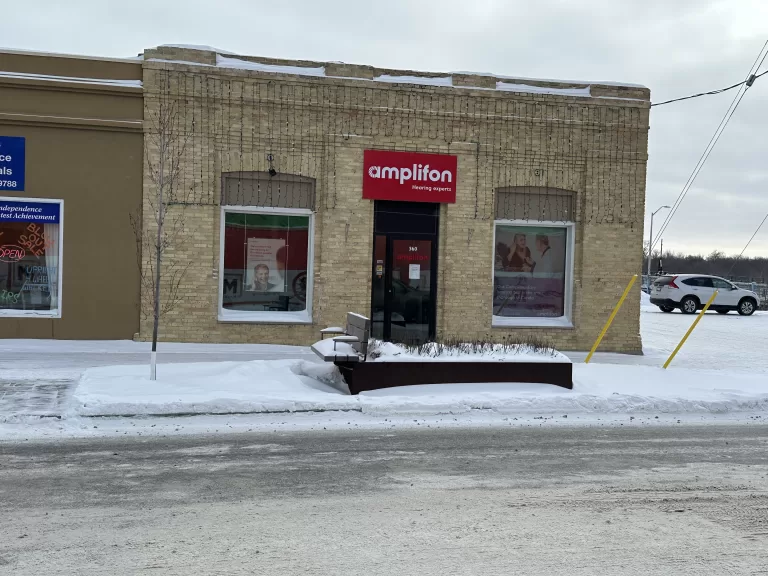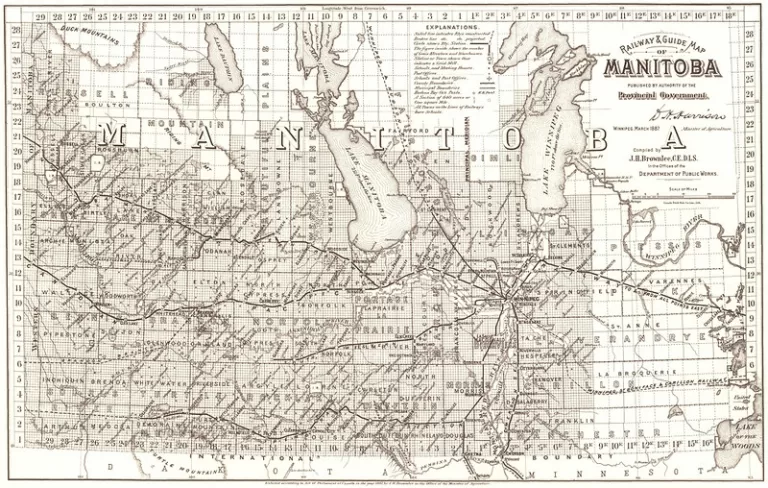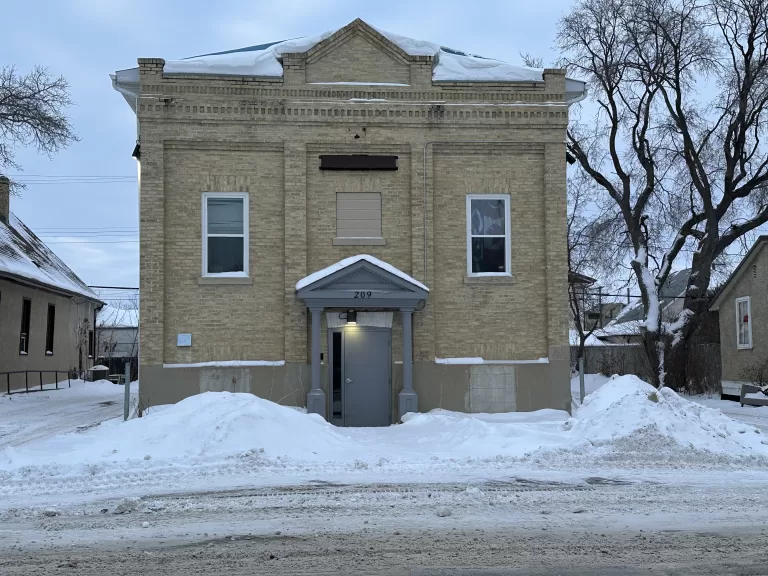A few historical figures could be responsible for the naming of Eaton Avenue.
Timothy Eaton, a successful businessman who founded the well-known Eaton’s department store brought his two nephews to Canada with the hope that they would help him run his stores. However, John James Eaton and Robert Y. Eaton were not interested in the retail business at all.
Instead, the boys headed to Clandeboye to try their hand at farming in with their brother-in-law Ed Millidge. Unfortunately, this endeavor proved unsuccessful, and they returned to Selkirk. The brothers built and operated a sawmill on Eaton Avenue where the Masonic Lodge is located today. Ed had a livery stable on Manitoba Avenue which rented wagons, carriages, and teams of horses to construction crews and new settlers.
The stable was later destroyed by a fire and land values plummeted in the early 1880s. The Eaton boys picked up and moved west to try their hand at ranching once more. John moved to North Battleford, Saskatchewan and Robert moved to Peers, Alberta where both men’s ranches became home to the retired horses that pulled T. Eaton Company delivery wagons.
W.H. Eaton, also a relative of Timothy Eaton, opened a general store of his own on the corner of Eveline Street and Eaton Avenue, then called Bannatyne Avenue. He remained in Selkirk even when the land values crashed.
A Visionary
W.H. was a stalwart booster of the town. He served on town council for two decades and was one of the sponsors of the Selkirk Agriculture Fair in 1878 – one of the earliest ever held in the West.
In 1889, he helped set up a railway company to connect Selkirk with the extreme south-eastern and the north-western corners of the province. Though the rail line was never built, he maintained his commitment to the town of Selkirk. In the 1890’s, he was a key backer of the Selkirk Electric Company and the Winnipeg, Selkirk and Lake Winnipeg Street Railway Company. In 1894, when his store burned down, he built a new store, made of brick.
The Eaton Legacy
W.H. Eaton’s brick building at 360 Eveline has taken on new identities as times change. In the early 1900’s, it became the main ticket and freight office for the street car company. After 1937, it was the Selkirk bus station. It stands, today, much altered, just to the north of the Selkirk bridge, re-purposed to last another hundred years.
A Magistrate’s House
The interesting “Queen Anne” styled house at 205 Eaton was the popular Garden on Eaton Tea Room until 2012. It was built for the police magistrate, Robert Scott. He had but to cross the street to attend the courtroom and cells in Selkirk’s Town Hall.
The Town Hall
On the corner of Eaton is Selkirk’s Civic Office. This modern building replaces a series of previous town halls that were located on the same spot. The town halls had a court room and the police cells as well as council chambers.
Debates in the early years were often unruly. When James Colcleugh became the mayor in Selkirk’s first election 1882, he defeated his cousin and former business partner, F.W. Colcleugh. F.W. promised never to speak to his cousin again. He refused to attend council meetings. He kept his word and later became Selkirk’s second mayor in 1886.
The Masonic Hall
The brick structure at 207 Eaton is a Masonic Hall. The sturdy, brick edifice almost devoid of windows was built in 1920. It is a reminder that power is often wielded through informal connections. Almost every business and municipal leader of the town was a member of the lodge. Masons met regularly in Selkirk from the 1870’s. James Colcleugh, Selkirk’s founding father was master of the lodge while he was mayor. The early land speculators such as Bedson, Bannatyne, Schultz who bought large sections of Selkirk were lodge brothers.
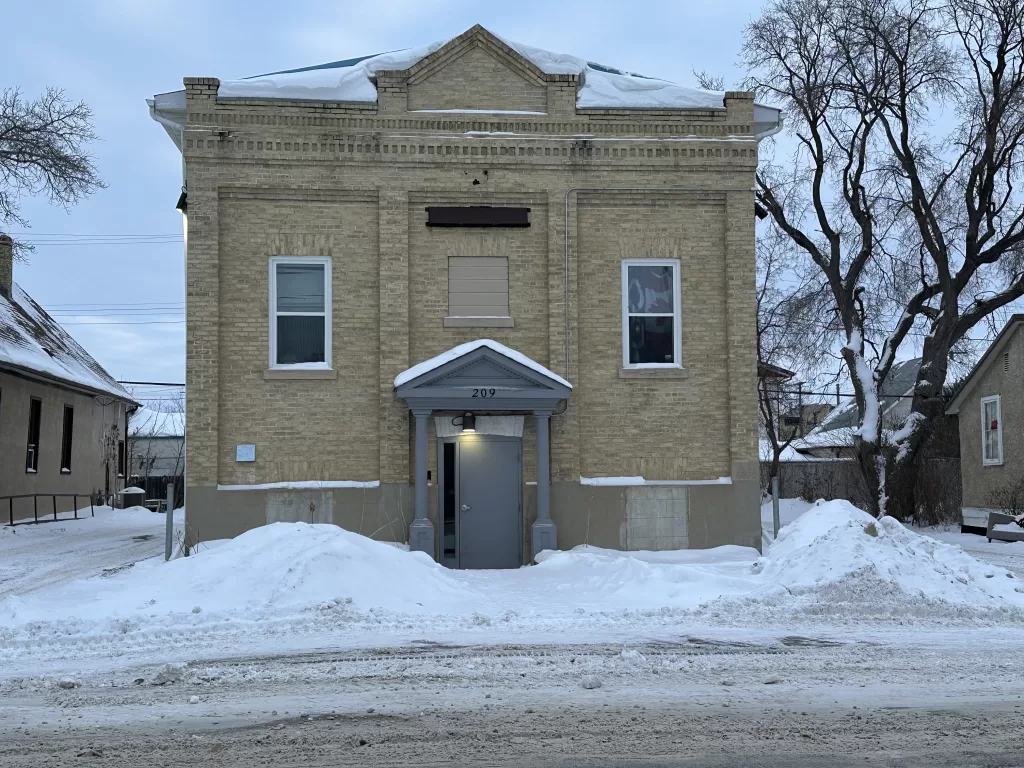
The Carnegie Library
The first public lending library in Selkirk was built on Eaton in 1909.
The town fathers argued over whether the town could afford the luxury of lending books to just anyone. Finally, it was a group of citizens who wrote to the Carnegie Foundation in New York to ask for a grant. The foundation agreed to give $10,000.
The library was seen by many as the key to knowledge and education, by others a costly waste. So when the library was built, there was no money set aside for the interior or books. It was then that two wealthy citizens stepped forward. Captain Robinson paid for the furnishings and banker and engineer, Edwin Comber, volunteered to become the librarian. The Carnegie library building was torn down to make room for the Selkirk Mall in the early 1960’s.
Two Important Schools
Central school was built in the 1890’s and was located on the south side of Eaton in the middle of the block. The original Selkirk School had burned down in one of many fires that swept the town in the early years. Central was a three-storey brick structure typical of the late Victorian era in Canada. All grades were taught under one roof. Other smaller schools were built in new neighbourhoods as the town expanded.
Lord Devonshire attended the commemoration of the school named in his honour at the corner of Eaton and Main in 1919. Many teachers and students of Devonshire school still reside in Selkirk today. It was demolished to make room for the Selkirk Mall in the late 1960’s. At least 9 former students of Devonshire landed at D-Day in 1944.
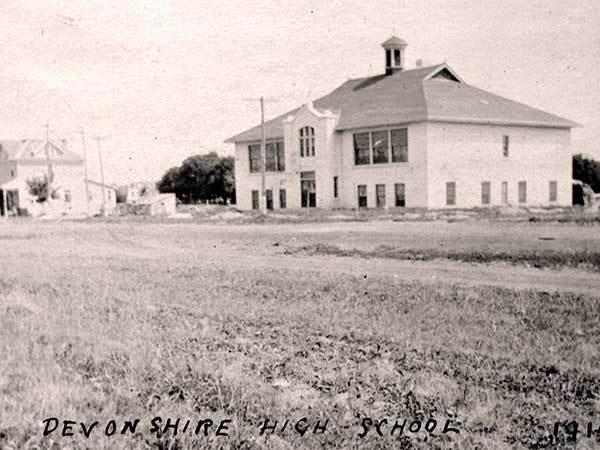
The Selkirk Bridge
Selkirk’s “blue bridge” is a noteworthy treasure. Although it is not the railway bridge that would have made Selkirk the transportation capital of Manitoba, it still plays an important role in the daily life of the region.
Built in 1935-1936 as a “make work project” during the great Depression, it sat with its centre span raised for six months. Governments argued over who would maintain it. In the spring of 1937, a frustrated citizen, Ed Maloney, climbed the tower and lowered the span by hand. Traffic streamed across! Officials scrambled to hold an official opening. In the face of the public uproar and the civil disobedience, toll tickets that had been printed to help pay for the structure were never used. The question of maintenance is still contentious 80 years later!
Eaton Avenue Collection
Sources
Selkirk the First Hundred Years, Barry Potyondi


